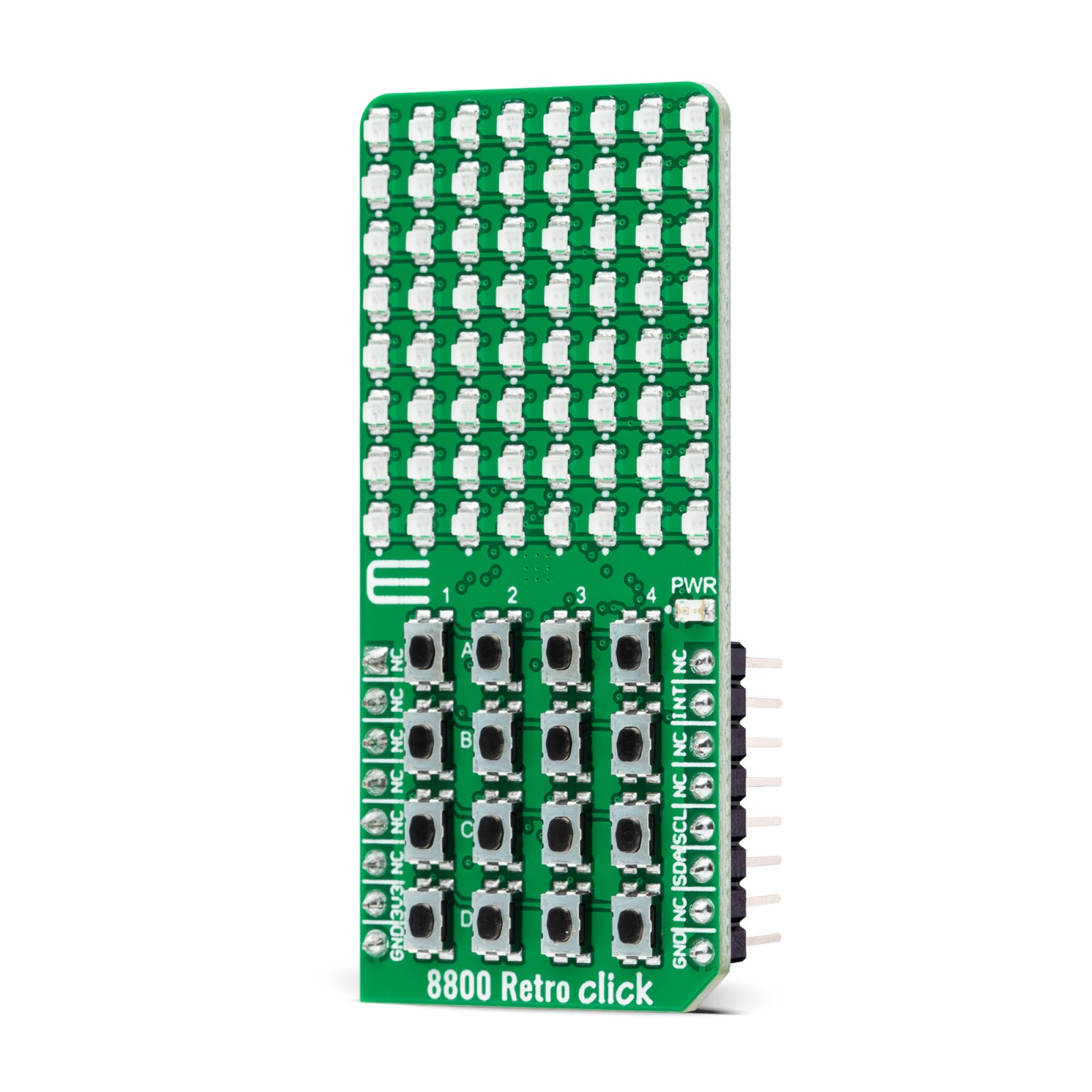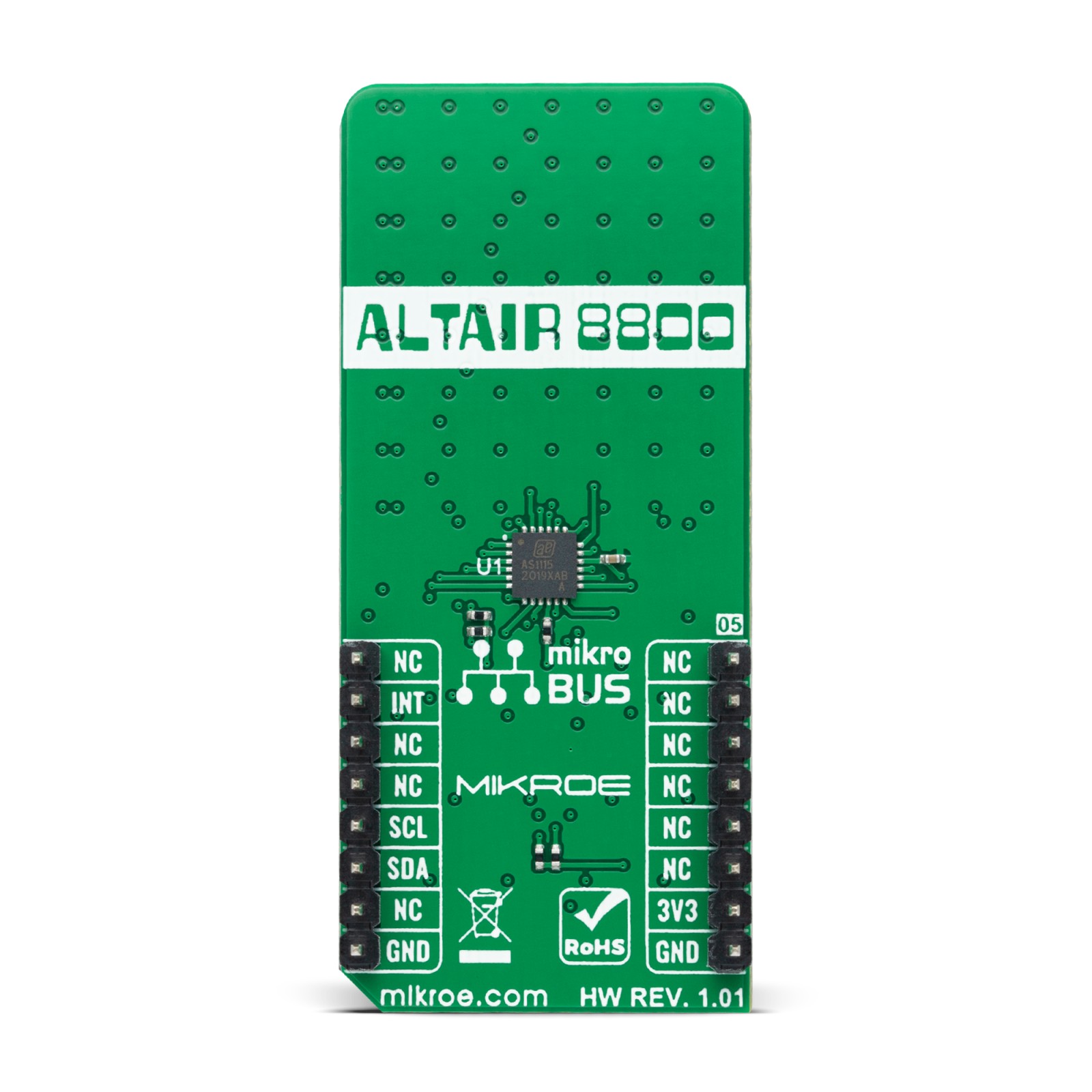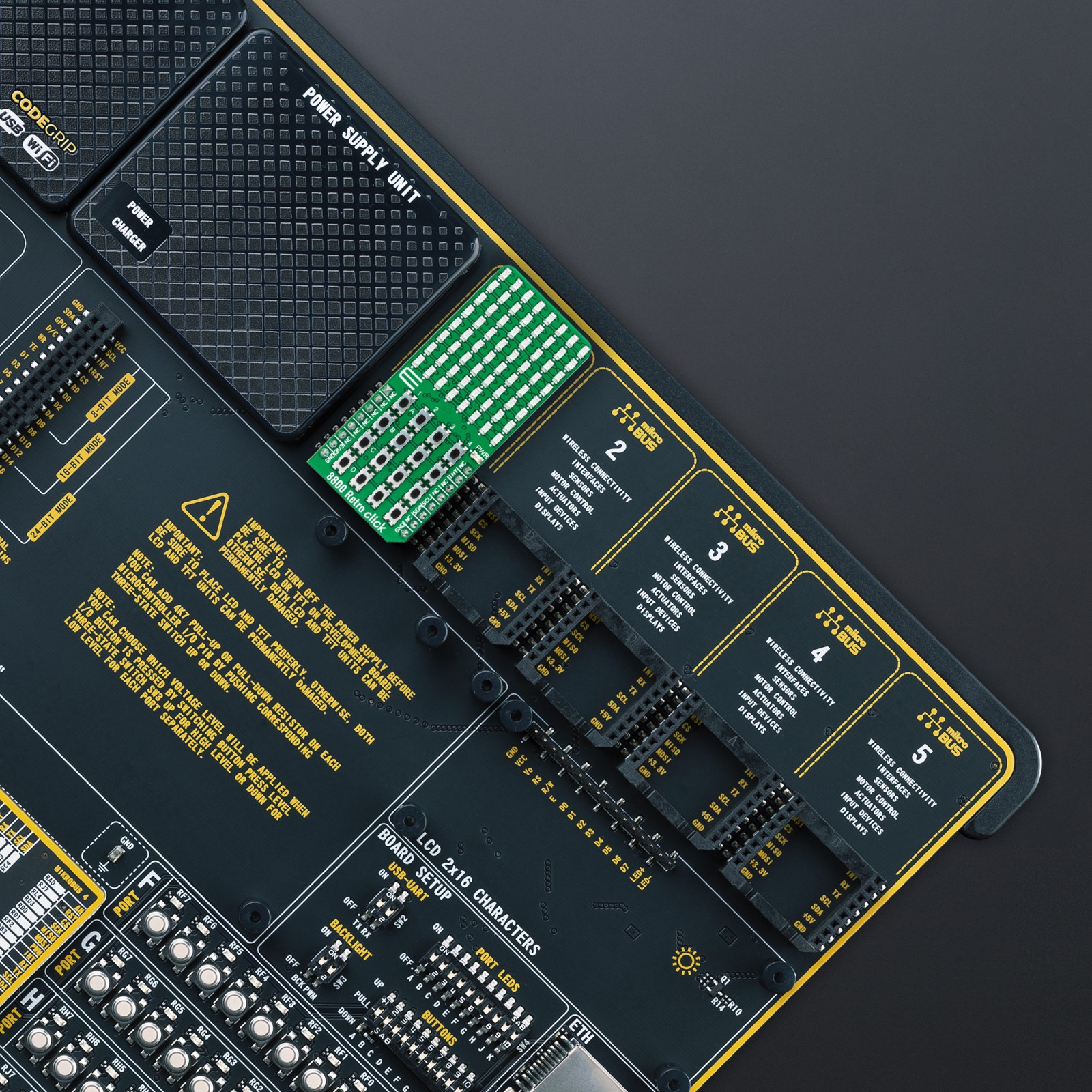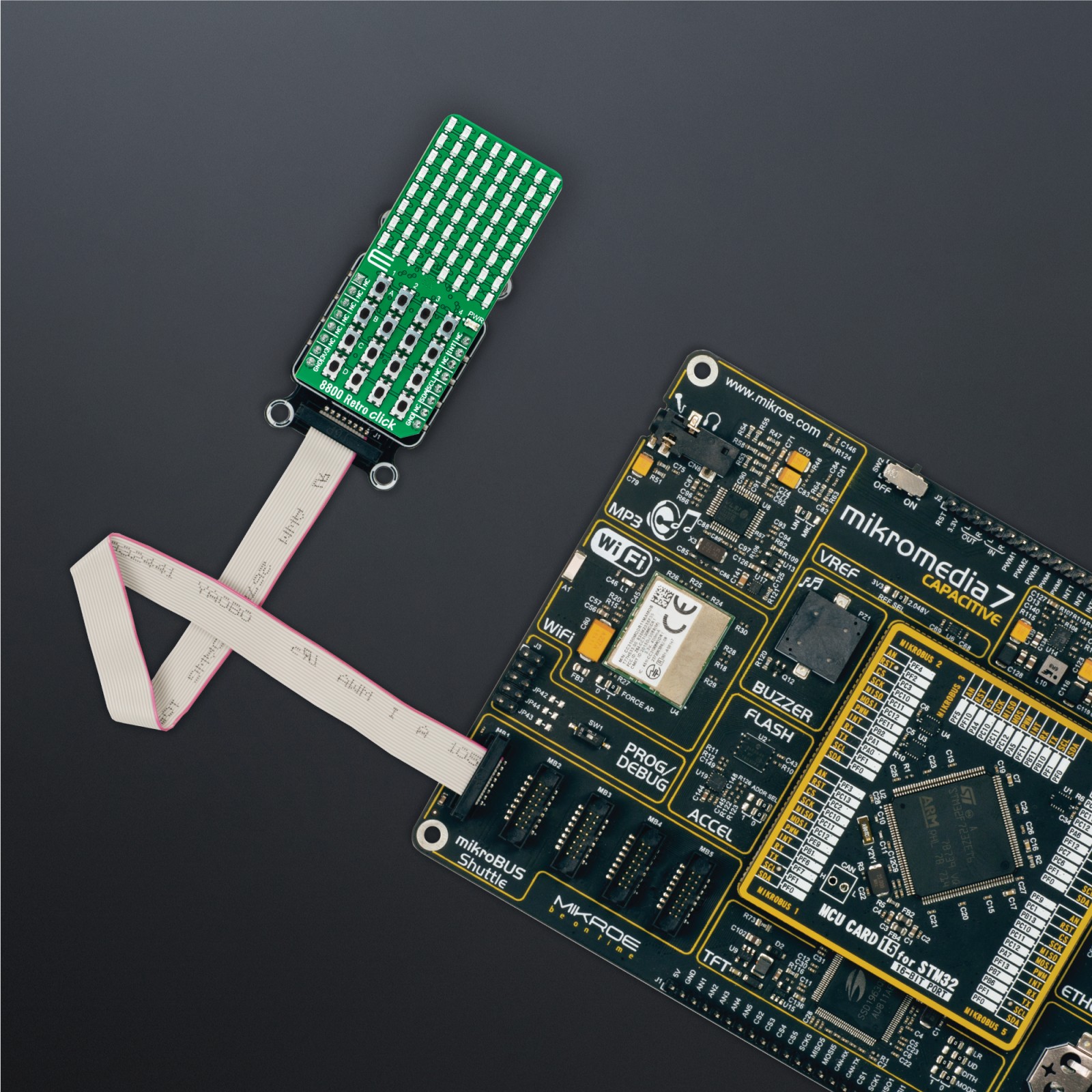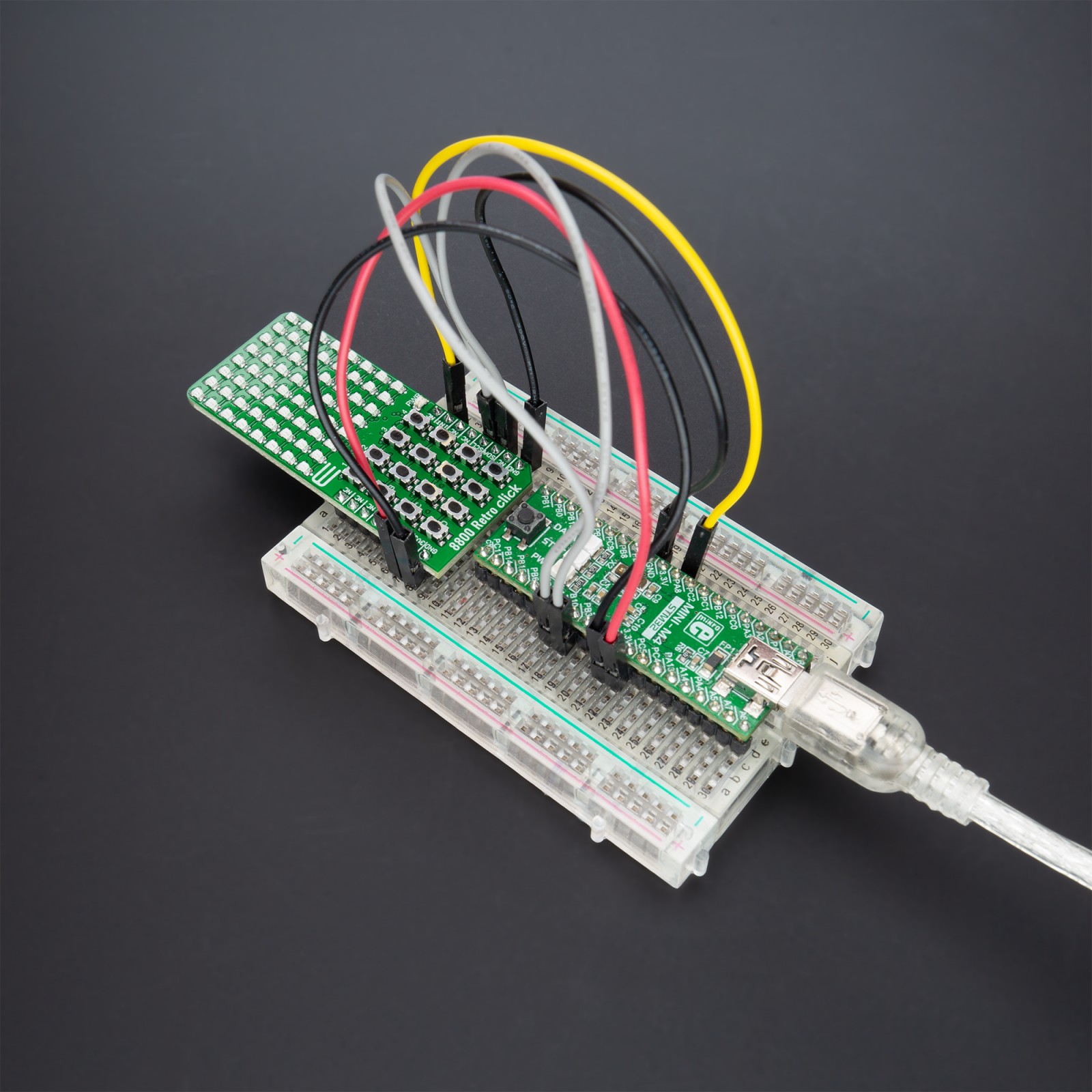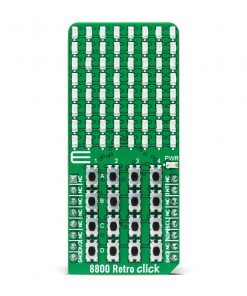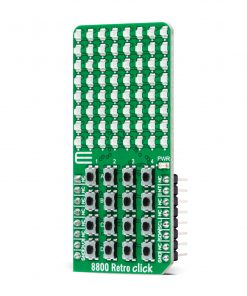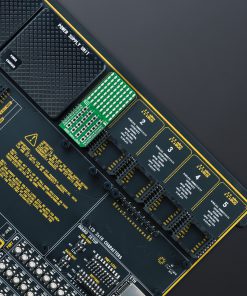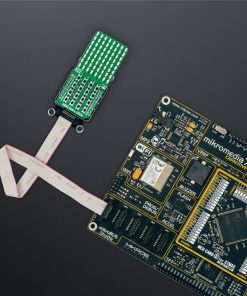8800 Retro Click
R515.00 ex. VAT
8800 Retro Click is a compact add-on board that simplifies the control of multiple LEDs. This board features the AS1115, compact LED driver for 8×8 display screen programmed via a compatible 2-wire I2C interface from ASM-AG. The AS1115 includes an integrated BCD code-B/HEX decoder, multiplex scan circuitry, segment and display drivers, and 64-bit memory. Internal memory stores the shift register settings, eliminating the need for continuous device reprogramming. All outputs of the AS1115 can be configured for key-readback, where key-switch status is obtained by polling for up to 64 keys, while 16 keys can be used to trigger an interrupt. This Click board™ is suitable for seven-segment or dot matrix user-interface displays and other white goods or personal electronic applications.
8800 Retro Click is supported by a mikroSDK compliant library, which includes functions that simplify software development. This Click board™ comes as a fully tested product, ready to be used on a system equipped with the mikroBUS™ socket.
Stock: Lead-time applicable.
| 5+ | R489.25 |
| 10+ | R463.50 |
| 15+ | R437.75 |
| 20+ | R421.27 |


